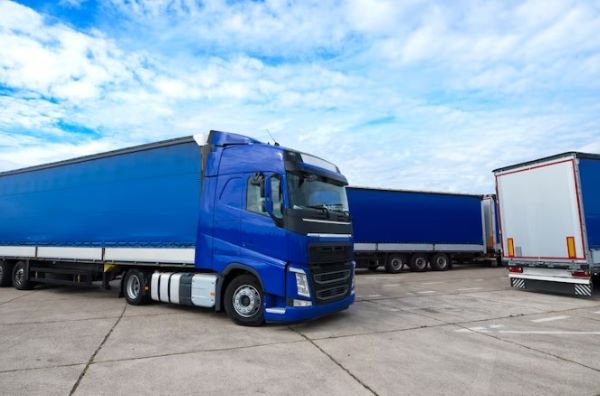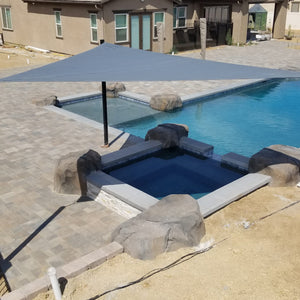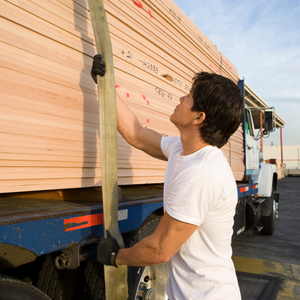
Selecting the Best Tie Downs for Your Tarp: Bungee Cords, Ratchet Straps, and More
If you need to haul or tow something in the back of your vehicle, you need a good tie down option to secure your stuff. If not, you could find yourself backtracking to pick up pieces that have flown off the back of your vehicle. Tie downs are critical if you are carrying valuable items. You want to secure them in the best way possible during travel and keep them from falling off your vehicle. It is also a great preventive measure to avoid causing property damage, depending on the type of load you are hauling.

Selecting the Best Tie Downs for Your Tarp
But which is the best tie down for your tarp? Check out the options available and the best ways to use them to secure your haul.
1. Bungee Cords
A bungee cord is made with an elastic core with a nylon sleeve. Metal hooks on the end make it easy to secure your vehicle load. Technically, bungee cords are not tie downs but perform just as well at securing your cargo.
Bungee cords are handy for securing loads in a truck or any vehicle, especially if you cannot close the trunk. It is also safer since you can keep your line of sight clear as the load won't obstruct your rearview mirror.
Bungee cords are also a versatile choice of tie down because they can be used for smaller loads. They prevent any item from rolling over inside the trunk of your vehicle and keep everything secure in place. The downside with using bungee cords for heavier cargo is they are a bit stretchy as a material. Therefore, there is a tendency for the bungee cord to stretch when there is excess weight placed on it. Due to the flexibility of bungee cords, it is best to measure the cargo and use a slightly shorter cord. This strategy will prevent them from becoming too stretchy and causing the cargo to move around.
2. Ratchet Straps
Ratchet straps are the most versatile tie downs for your tarp when carrying cargo on your vehicle. They are made of wide nylon straps with a metal ratchet mechanism. You can use the ratchet to adjust the tightness of the tie down to secure the load.
Consider the weight of the cargo when choosing the best strap type for this tie down. Ratchet straps are rated to support up to 15,000 lbs of weight. Choose the ratchet strap with the highest rating to ensure maximum strength and durability, allowing you to carry any load on your vehicle.
Choose an adjustable strap to ensure that you can securely tie down any cargo, especially bulky ones. This tie down works best when hauling furniture, firewood, and other heavy equipment.

3. Tarp Straps
A tarp tie down strap is made of rubber materials and a metal S-hook attachment. As the name implies, this tie down helps to secure a tarp on a moving vehicle and keep them from being blown away by the wind.
They are meant to protect the cargo from the elements during the transport process. They are not designed to secure the load in place, which means you should invest in another type of tie down for this purpose.
4. Rope & Twine
When all else fails, you can head to a nearby hardware store for a box of twine. You can use rope and twine as an alternative if you don’t have access to any of the above tie downs. Traditional rope can also be as effective to help secure your cargo.
The critical thing about using rope or twine as a tie down is to use the right knot. The best knot is the Trucker’s Hitch knot, a compound knot for securing loads on trucks and trailers. This knot type is a reliable choice for tension lines and requires forming ropes into loops and turns.
Considerations When Installing Tie Downs
Choosing suitable materials for your tie downs for a tarp is not enough. Knowing how to use the material is also critical in securing your tarp and valuable items. Here are some things for you to consider:
- Choose the best materials – Invest in tie downs made with high-quality materials because the last thing you want is for the material to fail and be unable to secure your cargo. Consider the quality of the straps and the metal component; specifically, they should be resilient to UV elements. Otherwise, you will sacrifice the integrity of the tie down and your cargo as the material will fail to perform its job.
- Secure your cargo tightly – The right tie down should give you enough adjustment to tighten it up, especially when handling heavy loads. Tightening the cargo can prevent unwanted movement during travel and helps secure it in place. The versatility of adjusting the straps makes it a practical choice for whatever you need to transport.
- Consider the driving conditions – You can adjust your tie downs to suit the road conditions you are traveling in. Is it bumpy? How much movement do you anticipate for the load to be exposed to? Each bump and movement can be hazardous to your cargo, so plan accordingly. It will help you pick the best tie down option as well.
- Consider the load rating – The load rating refers to the weight a tie down material can hold and support. Matching the load rating with your tie down material is crucial to ensure it can withstand the weight of the load. Aside from the weight of the cargo, you must also consider the extent of movement and the jolts on the road as it can add more pressure to the tie down material.
- Vehicle protection – Neglecting your vehicle when you're worried about securing your cargo is easy to do. Consider the excess strap management when choosing a tie down for your cargo. Ensure you can secure any excess straps and materials to avoid lashing your vehicle during travel.
With this information, you should confidently pick the best tie down for your tarp to secure your cargo. The right choice can give you peace of mind, knowing you can protect your cargo and prevent property damage.



